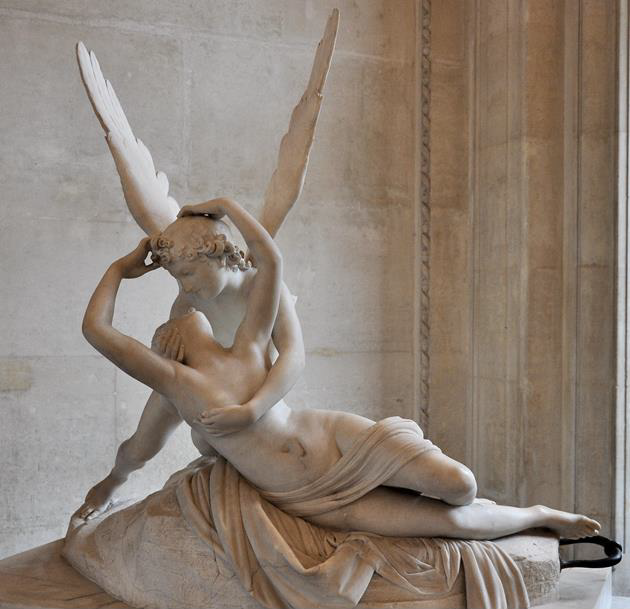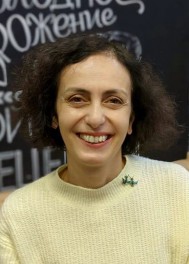
Kamala Melik-Akhazarova
The concept of Anima/Animus is one of the most popular concepts of Jungian psychology. Originally it was created by C.G. Jung to define the unconscious opposite to the social mask of personality (Persona), thus being an archetype that links the conscious Ego to the unconscious, and an archetypal image that contains all those features and functions that are present in the psyche in a more or less latent form but are not manifested in the conscious life and not available to the conscious ego.
Originating in the idea that Anima/Animus archetype is a counterpart of gender identity, these images are traditionally considered as feminine for men and masculine for women (in Latin, Anima is the feminine while Animus is the masculine gender, both defining the “soul”). This idea both attracts and stimulates the most ardent discussions among modern specialists, mostly because in Jung’s time the concrete definitions of what was considered as a “masculine” character or behaviour or what was considered as “feminine” hardly coincide with what is observed in modern times. However, it does not contradict either the idea that the unconscious psyche is a counterpart of the conscious identity, nor the notion of the healthy balance of different functions in the psyche that helps the individual to evaluate and stimulates growth and development of consciousness.
Anima is usually related to the emotional, empathetic, and sensitive aspects, while Animus is related to the active, intellectual, exploring side of the personality. Here it is important to understand that these definitions should by no means be perceived as literally describing certain characteristics, but that these images serve as symbols and are the abstractions of active (Animus) and reflective (Anima) principals correspondingly.
Being opposite to the embodied sexual identity, Anima and Animus are most easily related to the erotic encounters and partners and inspire the creative and artistic imagination. In relationships, they are easily projected to the potential partners we are unconsciously attracted to; thus, the difficulty arrives at the moment when the projections lessen and fall, and the individuals are re-seen in the light of reality. The hopeful aspect of this moment is that, through this contact with his or hers own unconscious depth, the individual (through the mediation of Anima/Animus archetype) emerges out of the projective illusions enriched and with a wider conscious spectrum of experiences. Of course, this process is much easier if the experience of such relationships was mostly positive and developmental than negative and defensive.
In dreams, the Anima/Animus archetype manifests in figures of strangers that are very attractive and invite us to travel to the unknown. The presence of these archetypal images is perceived by their sudden and captivating effect and a sense of being blessed or awakened – like what happened to Dante when he saw his Beatrice…
The examples abound in modern times too:
A middle-aged married woman, a scientist, academically oriented and ambitious, travels to a foreign country to attend a professional seminar. She is both anxious and excited; she thinks about her presentation and imagines her success. On the plane, she sits next to a very modest and shy man who, hardly speaks to her but the few phrases that he utters describing his recent long bicycle tour and his admiration of nature, evoke in her a deep resonance and a memory of her childhood trips to the neighbouring countryside, images of the river and the forest that she misses so much in her modern life. The sincerity and serenity of this contact evoke in her a deep longing for a more authentic emotional relations, and sadness. The next day, she cries as she suddenly realizes how far- away she is from her own self, how much she is cut off from something lively and warm, from the simple joys of life and from those whom she loved but somehow was unable to relate to emotionally, being overwhelmed by her professional ambitions. She doesn’t even notice all the things that were so meaningful to her only a few days ago – the vanity of the international congress she is attending, the desire to demonstrate her own brilliance, the spirited debates… she does not fail at her presentation but she is far from being as impressive as she usually is. Upon returning home, she is submerged in melancholia and her close ones are preoccupied with her depressed state… with time, however, she finds herself deeply involved in gardening and, little by little, this new side of her life creates a new network of friends and like-minded persons. The discoveries coming through her new everyday contemplations lead to a new sense of what is of value; her relationship with her children and husband become emotionally more relevant to her and her scientific mind turns to the awareness of ecology and the environment.
Here a modern woman, intellectually and socially over-active – in a state that we might consider as absorbed by a masculine-like social role – rediscovers her soul in a brief, but meaningful exchange with a stranger, who in this example is a carrier of an image of her Animus, with whose help she returns to her inner values and to the sensitive, deep, emotional, poetic and contemplative side of her individuality – the side of her where there is still much to explore and wherein lies her capacity to strive for deeply-held inner principles and values.
A man in his forties, a competent professional with a solid position in a bank, is practical, optimistic and a bit cynical… he denies the importance of emotional relationships and of his own acute sense of loneliness, believing that superficial social contacts are what he really wants and that his dog is his only true friend. He does not trust anyone and does not need anyone.
In a dream one night, he sees a gathering of his former school-mates. This party is not boring like the parties he ordinarily attends but full of joyful exchanges like the parties of their youth long ago. Among the invitees he sees a thin pale woman, dancing in a soft evening light. He is moved to tears and taken by surprise by his response to the sight of the woman. For several days he is unable to forget the dream nor the image of the slow dance that beckons him somewhere unknown. A week after the dream, he discovers that the receptionist at a sea-side hotel, where he usually goes with his dog at weekends, resembles his dream-figure. Somewhat shyly, he invites her for a coffee and suddenly bursts into confession about his most intimate
feelings and long-forgotten memories. They both notice that the world seemed different from that very moment and that a new hope arises…

Kamala Melik-Akhnazarova (Russia) is a Jungian analyst working in private practice in Moscow; a member of the Russian Society of Analytical Psychology (RSAP) and previous member of RSAP Ethics Committee. In recent years, she has translated and edited books for publication from English into Russian by Jungian authors such as Murray Stein, Nathan Schwartz-Salant, Margaret Clark and Jan Wiener. She contributed a chapter to the book From Tradition to Innovation (2015) edited by J. Wiener and C. Crowther. Email:kamala27@mail.ru
Here the dream evokes the emotional, romantic side of this man’s soul and the figure of a dancing woman – an image of his Anima – is so strongly charged with feelings that his habitual rigid defences through cynicism, irony and mistrust are deconstructed. The woman is so mysterious and at the same time so familiar (it is no surprise as, according to Jung, the man is looking at a portrait of his unconscious aspect), that it is not possible to forget her – He remains charmed by this image long after the dream dissipates, and thus he is able to form a contact with his own vulnerable, sensitive, loving, and lively depth. The bridge between his Ego and Self emerges. It allows our hero to behave spontaneously in his routine daily life and opens a new way of internal and external communication for him – sincere, serene, and trustful.

